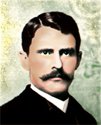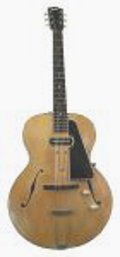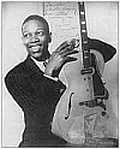Gibson Guitars...
Legendary And Deservedly So

A Change of Hands...
Orville's only patent was to an innovative mandolin design. In 1900, he met a group of investors who wanted to manufacture guitars and violins of his design under the protection of his patent. In 1904 Orville sold the rights to his patent to the group. After his sale of the patent, Orville's contribution to the company is unclear. Orville's health began to fail and he was eventually diagnosed with chronic endocarditis. Orville succumbed to the disease in 1918.
A Period of Serious Innovation...

The 1920's saw a flurry of innovations. Along came elevated fretboards, height adjustable bridges and one of the most important guitar components, the adjustable truss rod. Not ony does the truss rod balance the tension of the strings and neck keeping the neck properly aligned, it also prevents the neck from eventually warping under the tension of the strings. In 1924, Loar came up with an instrument that was about 30 years ahead of its time - the electric bass. Loar's bass was totally radical for the time and neither Gibson Guitars management nor the public accepted it. The rejection of his bass led to Loar's resignation.
Gibson Goes Electric...


Another Change of Hands...
During World War II materials were very scarce and Gibson's instrument production ground to a halt. In 1944 Gibson Guitars was bought by Chicago Musical Instruments, a noted music wholesaler. Thanks to the war's affect on business there was an enormous demand for musical instruments. This resulted in production resuming in 1946. In 1948 Gibson Guitars made what was probably one of its best moves ever. They hired an industry veteran named Ted McCarty. In 1950, McCarty assumed the presidency of the company and remained there until 1966.
Under McCarty's direction Gibson absolutely boomed. His tenure saw the development of some of the most iconic of the Gibson Guitars such as the Les Paul, the SG, the Explorer, the Firebird and the Flying V. In addition, his tenure also saw the development of the Tune-O-Matic stopbar tailpiece and the humbucking pickup. As a result of these developments and innovations Gibson Guitars workforce increased by a factor of 10, profits by a factor of 15 and sales ballooned by over 1000%. McCarty's time at Gibson was definitely a boom era for the company.
| Next: Gibson Gets Solid... |
30 Day FREE TRIAL!







New! Comments
Have your say about what you just read! Leave me a comment in the box below.